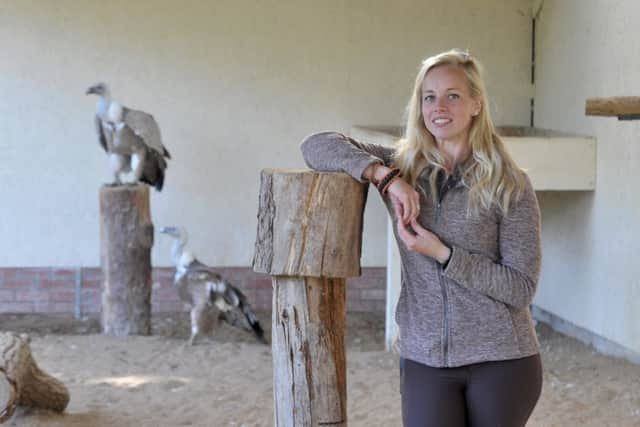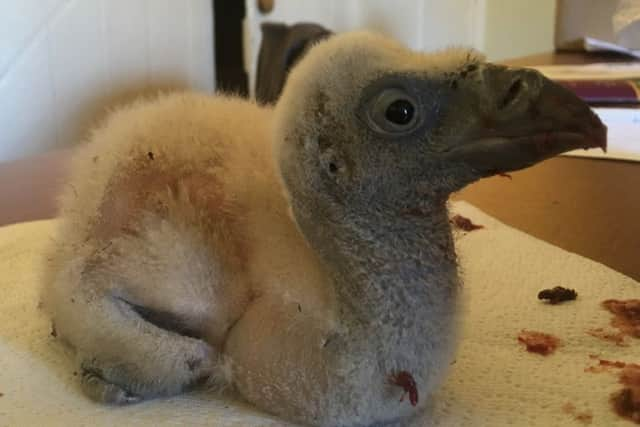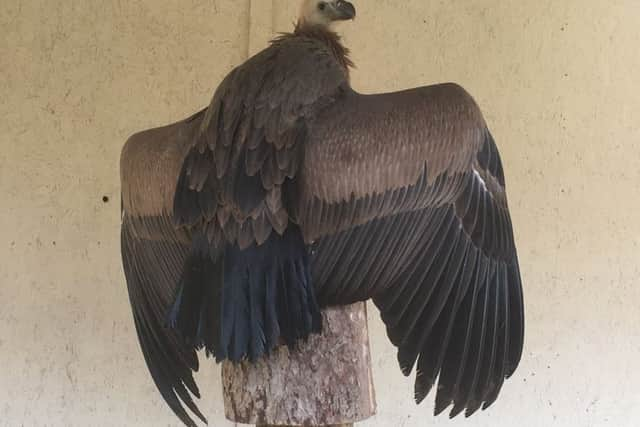Walking on eggs... the baby vulture hatched in Helmsley
The 15lbs griffon vulture born at a bird sanctuary in Helmsley and named Vicki by the staff there, is the first to have been bred in captivity in the British Isles – a part of the world in which its ancestors were made extinct at least 500 years ago.
She was hatched following five years of trying to breed a pair of disabled vultures that had been brought to Yorkshire after a rescue from the wild.
Advertisement
Hide AdAdvertisement
Hide Ad“We had a couple of near misses – vultures are clumsy and argumentative creatures,” said Charlie Heap, a falconer who runs the National Centre for Birds of Prey.


“They argue over which of them is going to incubate the egg, then one of them steps on it and breaks it.”
Eventually, Mr Heap and his colleagues built an artificial incubator, into which they placed a newly-laid egg. The parents were given a dummy to sit on, but reared Vicki from a week-old chick.
“Vultures make the most wonderful, loving parents,” he said. “It would not have been possible to release a hand reared bird into the wild.”
Advertisement
Hide AdAdvertisement
Hide AdAfter around five months, at 15lbs and with an 8ft wing span, Mr Heap drove Vicki the 1,100m to Sardinia himself, rather than submit her to a courier service.


“I am staggeringly proud that she will now spend her life soaring over the Mediterranean hills,” he said.
“This really has been one of the highlights of my career. I’m not ashamed to say I shed a tear or two when this griffon vulture hatched in my hand.”
Vultures are among the world’s most threatened animals, having largely disappeared from their natural habitat in southern Europe. Spain is the only country with a thriving population, but Sardinia is the focus of attempts to reintroduce them.
Advertisement
Hide AdAdvertisement
Hide AdVicki, who was born in April weighing only 4lbs, has been accepted into a release programme on the island run by the Vulture Conservation Foundation, which aims to establish a self-sustaining population.


She is housed temporarily with other young birds before heading to a release aviary later this year.
Mr Heap, who said he “couldn’t be more excited” about Vicki’s release, added: “Griffons are beautiful creatures. “They have wonderfully long eyelashes and they’re extremely intelligent.”
He also said that although scavengers who fed on carrion – the decaying flesh of dead animals – they were misunderstood.
Advertisement
Hide AdAdvertisement
Hide Ad“They do a great job as nature’s dustmen, cleaning up stuff no one else wants to, for free,” he said.
“For many people, the fact they eat carrion is unpleasant – but the meat they eat is often fresher than what most humans consume.”
The artificial incubator “worked first time”, said Mr Heap, producing not only Vicki but also eight other species.
He said: “Breeding from a one-winged male is very unusual, due to balance issues. We weren’t sure it was going to be possible. This is proper, front-line conservation.”
The centre, at Duncombe Park, is home to the largest collection of birds of prey in the North of England.